Patterns and Politics
Claudia HartPatterns and Politics is the first museum retrospective of American media artist Claudia Hart. Since the mid-1990s, she has been constructing complex scenarios in various 3D programs in which mathematical structures, scientific models and the visual language of consumer culture merge. This results in mythologically charged worlds in which virtual bodies, ornamentation and cyclical and historical processes are inextricably interwoven.
A virtual camera captures these spaces and the resulting render sequences form the basis for Hart's films, installations, pigment prints, sculptures, quilts, augmented reality wallpapers and paintings. The result is a visual cosmos in which scientific systems of thought, historical narratives and questions about perception, the body, identity and power intertwine.

Produced on the occasion of "Patterns and Politics," the first museum retrospective of American media artist Claudia Hart. Since the mid-1990s, she has been constructing complex scenarios in various 3D programs in which mathematical structures, scientific models and the visual language of consumer culture merge.
Julia Staudach and I laboriously researched this exhibition. My job was to sort through the dozens of boxes filled with art stored in my basement, many of which I could barely remember. One was a cardboard tube, in which I found these three photographs. I could not remember how they came to be there, so I looked through my library of catalogs and found one for a show called Fetish: Human Fantastic, organized by the curator Michele Thursz, active around the millenium and I also the first to work with the cultural shifts that MIGHT be engendered by the computer. None had happened yet, and computer culture was at that time still far from ubiquitous.
Michele and I were intellectual partners-in-crime, talking at length about what the future might bring. The 2002 catalog was for an exhibit that was held at the Borusan Culture and Art Center in Istanbul. Ahmet Kocabıyık, the honorary Chairman of the board of directors of the Borusan Holding Company, also sponsored the Borusan Cultural Center in 2002, has since become one of the major collectors of digital art, with a private museum in Istanbul that collects my animations. I remembered then, that these photos were a gift from one of his board members, whose name I am still unable to recall. They are very early examples of digitally-produced photo prints. What I do remember, is that he was a successful industrialist and also a skilled photographer, fascinated by what was then a novel process.
Michele and I were intellectual partners-in-crime, talking at length about what the future might bring. The 2002 catalog was for an exhibit that was held at the Borusan Culture and Art Center in Istanbul. Ahmet Kocabıyık, the honorary Chairman of the board of directors of the Borusan Holding Company, also sponsored the Borusan Cultural Center in 2002, has since become one of the major collectors of digital art, with a private museum in Istanbul that collects my animations. I remembered then, that these photos were a gift from one of his board members, whose name I am still unable to recall. They are very early examples of digitally-produced photo prints. What I do remember, is that he was a successful industrialist and also a skilled photographer, fascinated by what was then a novel process.
Female Archetypes: Vulnerability and Resistance
Location: Entry Foyer
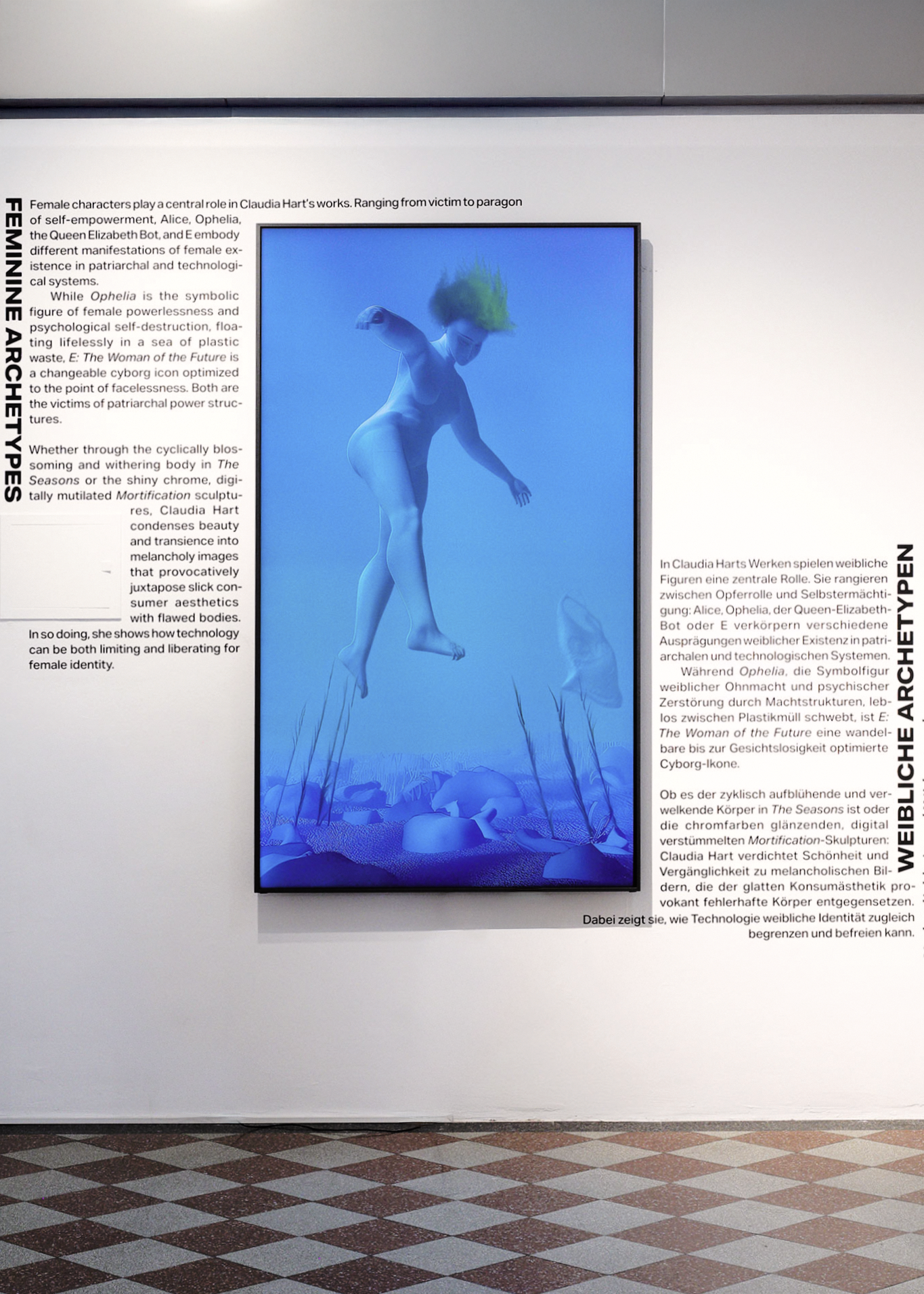
Female characters play a central role in Hart's works. They range from the role of victim to one of self-empowerment: Alice, Ophelia, the Queen Elizabeth Bot and E embody different manifestations of female existence in patriarchal and technological systems.
While Ophelia is the symbolic figure of female powerlessness and psychological self destruction, floating lifelessly in plastic waste, with E: The Woman of the Future is a changeable cyborg icon optimized to the point of facelessness. Both are the victims of patriarchal power structures.
Whether it is the cyclically blossoming and withering body in The Seasons or the shiny chrome, digitally mutilated Mortification sculptures, Claudia Hart condenses beauty and transience into melancholy images that provocatively juxtapose slick consumer aesthetics with flawed bodies. In so doing, she shows technology as both limiting and liberating female identity.

My small figurines ‐ The Mortications 01 and 02 ‐ were originally 2007 Rapid prototype 3D printed sculptures made from ABS plastic, using a figure that I modeled using Maya 3D animation software. I later adapted it in 2018 by using the fantasy "Kryptonite" process developed in collaboration with designer Benjamin Stagle, in which a plastic model was dipped in nickel chrome, then lacquered, stained, and placed on a cast rubber pedestal produced specifically for the piece. Our title and intentions were ironic, as they were neither archival nor endowed with any metaphysical magic like the original Kryptonite was in the Superman 1938 comics series.
The Hermitage Series
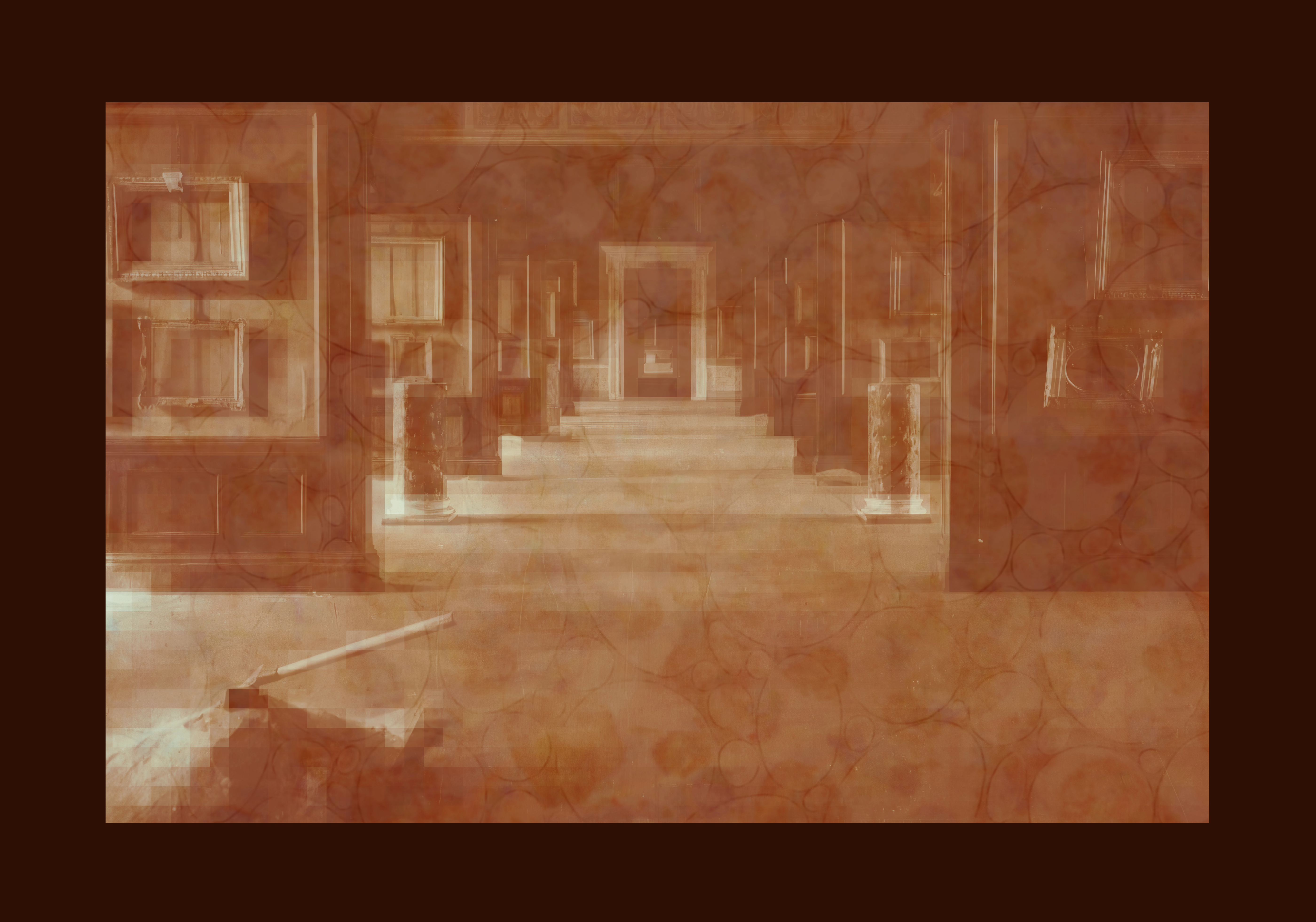
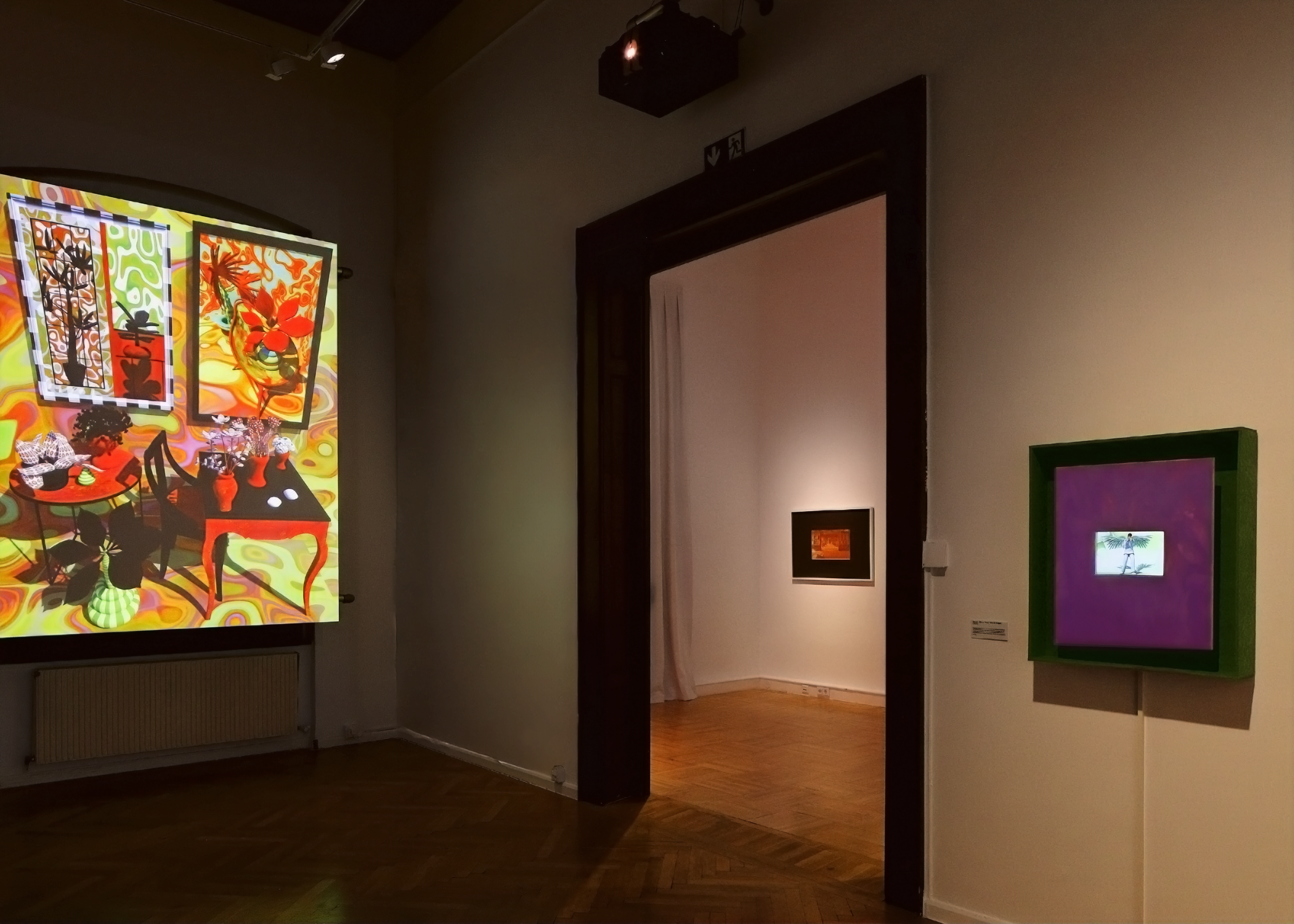
In the Hermitage series, Hart deals with the Second World War. She was inspired by photographs of the Louvre and the Hermitage with their walls filled with empty frames, after the masterpieces were taken down and hidden from the Nazis.
Historical events, decay and the decline of culture are also the themes of Processing History, in which Hart connects the seven-year cell renewal cycle of the body with the timeline of the development of modernism in Chicago.

Audio track of the Queen Elizabeth Bot sound track for Digital Combines wallpaper custom augments.
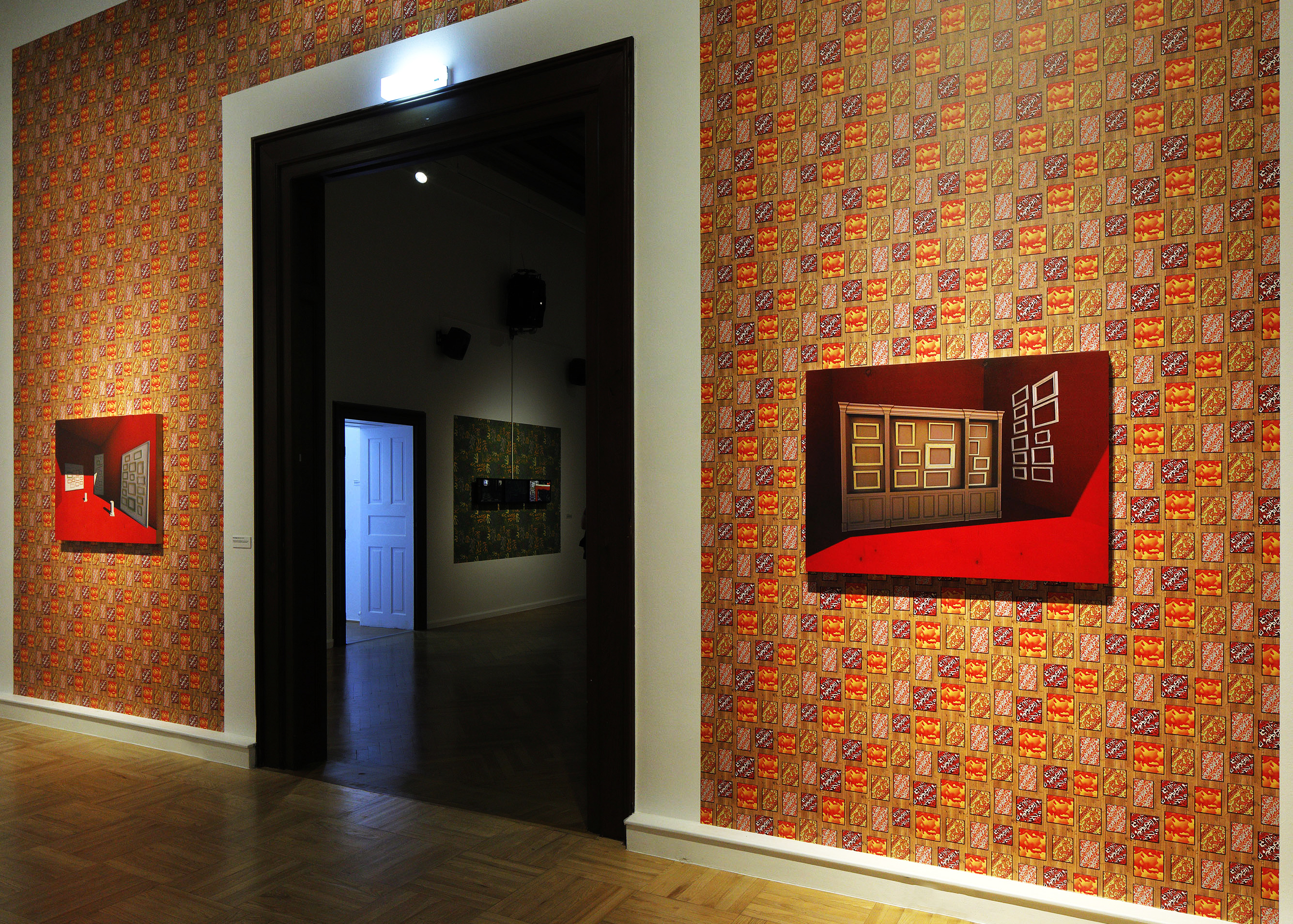
I produced the images in the Hermitage series originally for The Ethereal Aether (2021) curated by Dimitri Ozerkov, the media curator for the Hermitage Museum, St. Petersburg, for his virtual‐reality version of the real museum. I created 3D software images first intended for NFT, then later remade as "Ghost Paintings," a mixed reality version of painting that I developed over the covid guarantee, using a custom process I invented when I had limited access to the world. Hermitage 01 and Hermitage 02 (2021/2022), are early versions of this technique, using red Bombay India ink and raw pigment on maple wood. Most important to me in this body of work is the introduction of the Queen Elizabeth Bot, a character that I feel embodies the adult me. After the real queen died (2022), I found an open‐ source bot, adopting her voice to perform comical 2024 old‐girl versions of the Sun Tzu Art of War (5th c. BC) and Machiavelli’s The Prince (1513), that I studied and adopted during my years in Berlin in the 90’s, in an attempt to assume power over my own life. The augmented Hermitage wallpaper triggers ludic text animations by the current old‐girl me.
Female Rebellion on the Ruins of Modernism
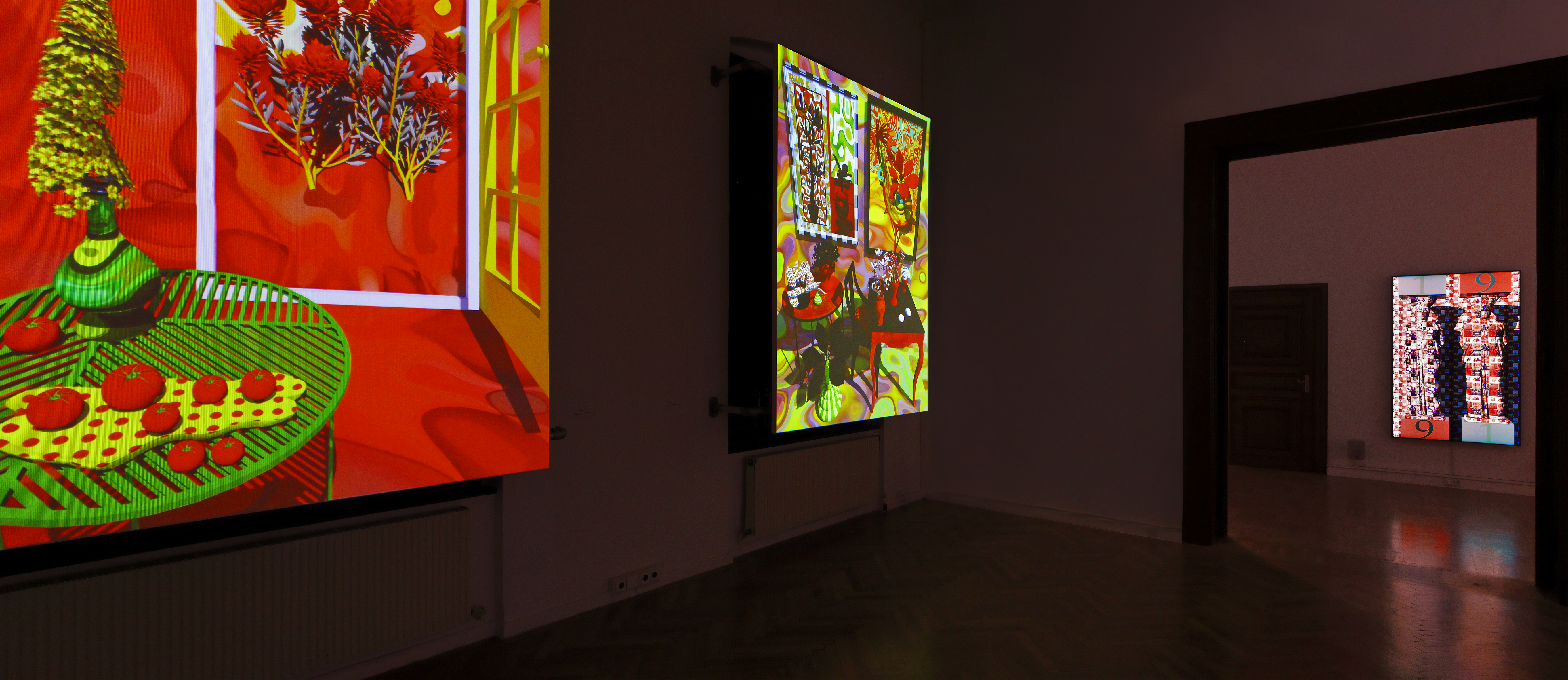
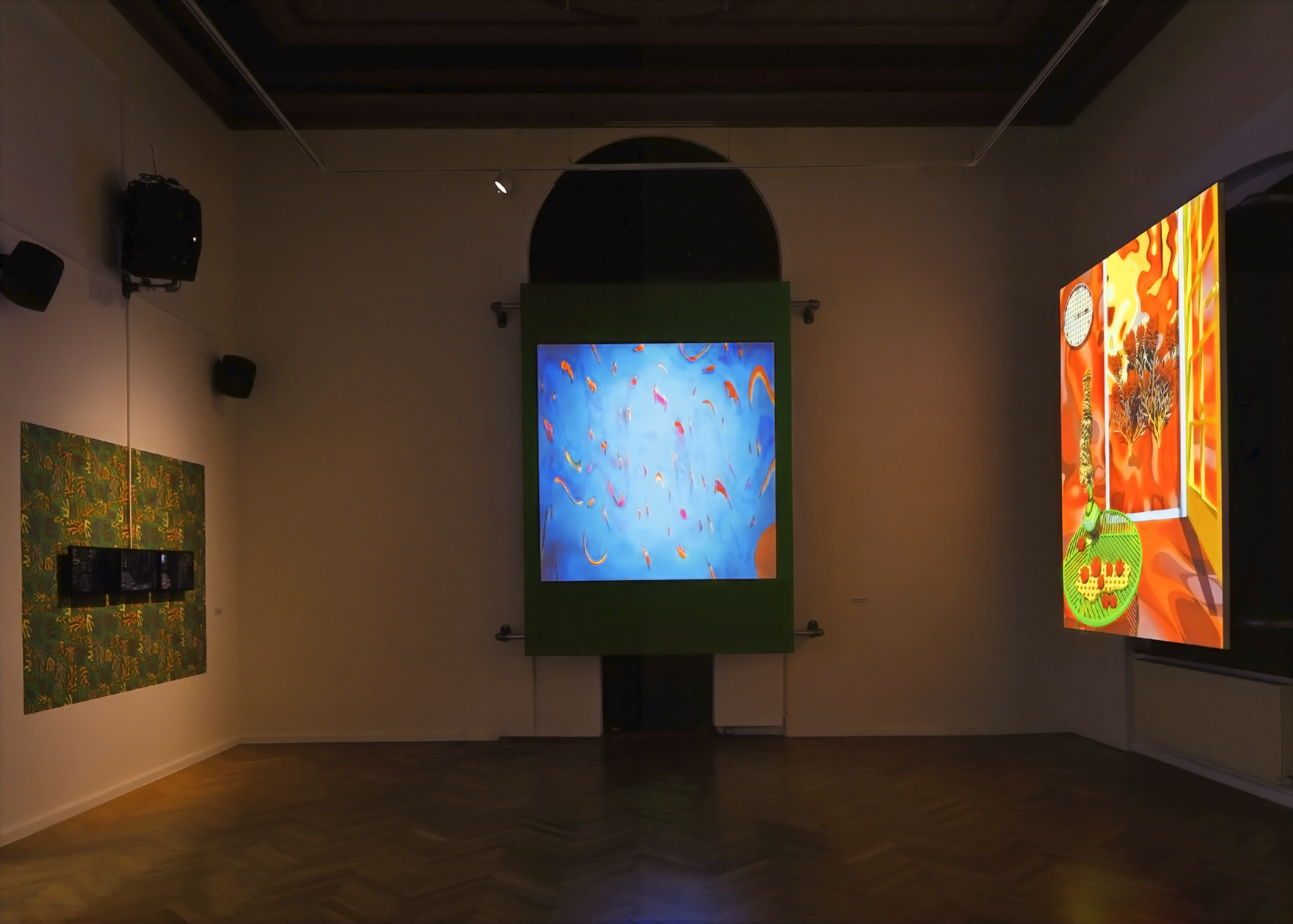
Hart's reflection on the collapse of Modernist utopias emerges from the current crises in America - Covid, Black Lives Matter, the shift to the right.
In her series The Ruins, she transforms still lifes by Matisse into fluid animations, and creates a three-channel video installation navigating through a 3D game world filled with deliberately primitive polygon models of canonical works by Picasso, Matisse and Morandi, while Edmund Campion's audio mixes with Hart's readings of failed utopian manifestos, to create an experiential nightmare of cultural collapse.
In the Illuminations series of works, Hart interweaves art history with autobiographical sequences. Me as I Once Was (Not an Angel) and Memory Theater 02 both reference her time in Berlin in the 1990s, as an experimental time travel between different egos. Both are part of the Illuminations series.
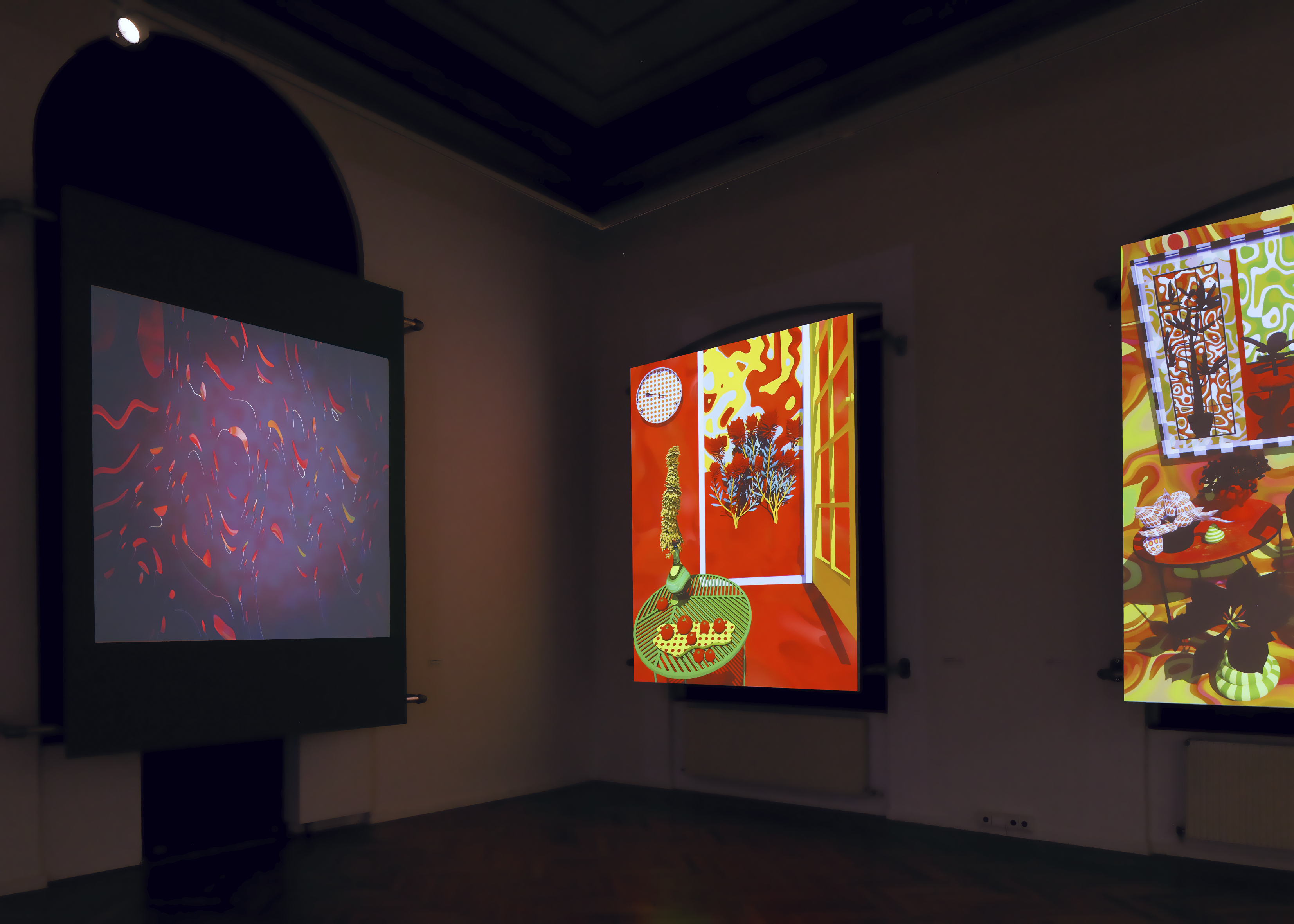
Systems Madness, Artblocks NFT Documentation
The Yellow Wallpaper Documentary (2023/2025), 40 minute animated loop made using custom software designed by Andrew Blanton to produce the Artblocks Systems Madness series of NFT (2023).
In Systems Madness, Claudia Hart and Andrew Blanton transform AI-generated, animated wallpaper patterns based on five floral motifs of poisonous plants into a pulsating ornamental vortex that alludes to Charlotte Perkins Gilman's story The Yellow Wallpaper (1892) in which a woman, imprisoned in her bedroom by her husband, gradually goes mad from sensory deprivation as she stares at its wallpapered walls. This work seizes on the metaphor of AI as a generator of the fictional in which lost illusions of reality have collapsed into an ominous world of anxiety and lies.
︎
The Ruins (2020), 10-minute audio installation, composed and recorded by Edmund Campion, using a vocal performance scripted and performed by Claudia Hart
Edmund Campion and I met in Paris in the early nineties, when we were both residents at the American Center there. I came there to produce an exhibition for the Ropac Gallery, who I worked with in Salzburg, and had just opened a dependance in Paris. In Paris, Ed and I began a fruitful 20‐year collaboration, co‐producing theatrical and performative works, including the Alice series and the audio work for the Ruins. From the beginning, I adopted characters and voices, speaking in “tongues,” for Ed to use as crazy librettos for his sophisticated modernist compositions. For The Ruins sound installation, Campion, who remains the director of the Center for New Music and Audio Technologies, UC Berkeley, utilized the CNMAT “Resonators~” synthesis objects designed by Adrian Freed, with support from Jeremy Wagner and the staff of CNMAT.